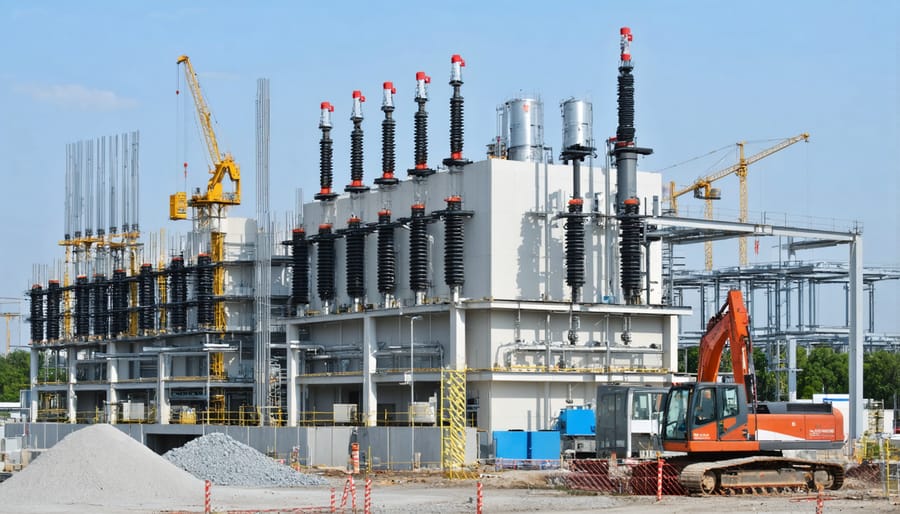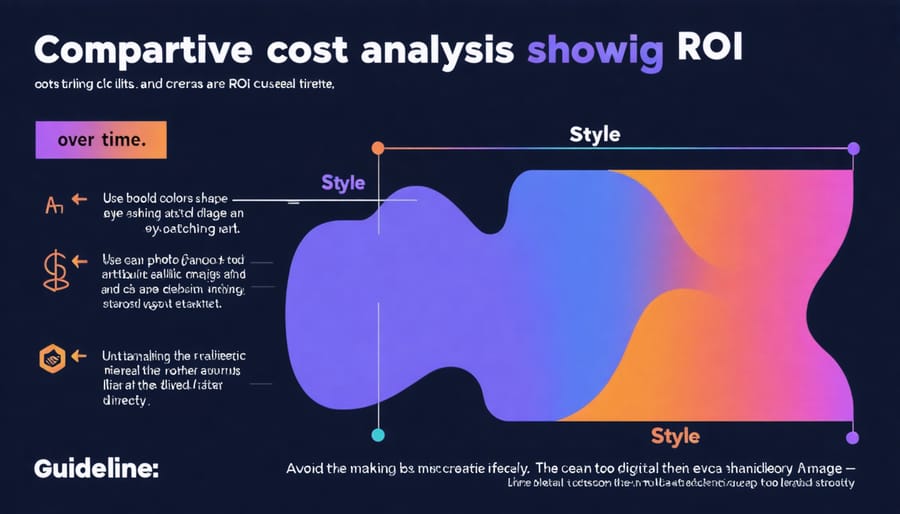Quantum energy storage stands poised to revolutionize modern construction through breakthrough power storage solutions that operate at the atomic level. By harnessing quantum mechanical principles, this emergent technology enables construction projects to store and distribute energy with unprecedented efficiency, reducing operational costs by up to 40% compared to conventional systems. The integration of quantum storage systems into building infrastructure represents a paradigm shift in how we approach energy management, offering construction professionals a competitive edge through enhanced grid stability, reduced peak load demands, and superior energy density capabilities. As the construction industry grapples with increasingly stringent sustainability requirements and rising energy costs, quantum storage technology provides a scientifically-proven pathway to meet these challenges while delivering measurable returns on investment. This transformative approach to energy storage not only addresses immediate power management needs but also positions forward-thinking construction firms at the forefront of sustainable building practices.
The Science Behind Quantum Energy Storage
Quantum Dots and Energy Capture
Quantum dots represent a groundbreaking advancement in energy capture and storage technology, offering unprecedented potential for the construction industry. These nanoscale semiconductor particles, typically ranging from 2 to 10 nanometers in diameter, possess unique optical and electronic properties that make them ideal for energy applications.
The key advantage of quantum dots lies in their ability to be precisely tuned to capture specific wavelengths of light, maximizing energy absorption efficiency. When integrated into building materials such as solar panels or window coatings, quantum dots can capture a broader spectrum of solar energy compared to traditional photovoltaic cells, including wavelengths that conventional systems typically waste.
In construction applications, quantum dots are being incorporated into transparent solar windows and building-integrated photovoltaics (BIPV). These materials can simultaneously harvest solar energy while maintaining transparency, making them particularly valuable for commercial buildings with large glass facades. The technology allows for energy capture without compromising architectural aesthetics or natural lighting requirements.
Recent developments have shown that quantum dots can achieve conversion efficiencies exceeding 16% in laboratory conditions, with ongoing research suggesting potential for even higher rates. Their implementation in construction materials has demonstrated durability under various weather conditions and minimal degradation over time, addressing key concerns for long-term building applications.
The scalability and relatively low production costs of quantum dot technology make it an increasingly viable option for large-scale construction projects seeking to enhance energy efficiency and sustainability credentials.

Quantum Capacitors vs Traditional Batteries
When comparing quantum capacitors to traditional batteries, several key differentiators emerge that are particularly relevant to construction applications. Quantum capacitors demonstrate superior power density, capable of storing up to 10 times more energy per unit volume than conventional lithium-ion batteries. This enhanced storage capacity translates to smaller footprints in construction projects, where space optimization is crucial.
Traditional batteries rely on chemical reactions to store and release energy, leading to degradation over time and typically lasting 3-5 years in heavy-duty applications. In contrast, quantum capacitors utilize quantum mechanical principles, specifically electron state manipulation, resulting in minimal degradation and an estimated operational lifespan of 15-20 years.
The charging efficiency also sets these technologies apart. While conventional batteries require hours to reach full charge, quantum capacitors can achieve 80% capacity in under 15 minutes. This rapid charging capability is particularly valuable for construction sites where equipment downtime directly impacts project timelines and costs.
However, traditional batteries currently maintain a significant cost advantage, with prices averaging $150-200 per kilowatt-hour compared to quantum capacitors at $500-600 per kilowatt-hour. Despite higher initial investment, quantum capacitors offer superior long-term value through reduced maintenance requirements, longer lifespan, and improved operational efficiency. Construction firms must carefully evaluate these factors against their specific project requirements and budget constraints.
Practical Applications in Construction

On-Site Power Management
On-site power management through quantum storage solutions represents a significant advancement in construction site energy optimization. These advanced smart energy systems enable precise control over power distribution, ensuring efficient allocation of resources across various construction activities.
The implementation of quantum storage technology allows project managers to maintain consistent power levels during peak usage periods while minimizing energy waste during low-demand phases. Real-time monitoring capabilities enable instantaneous load balancing, reducing the risk of power outages and ensuring critical equipment receives adequate power supply.
Construction sites utilizing quantum storage systems typically experience a 30-40% reduction in generator fuel consumption, as the technology efficiently captures and redistributes excess energy. This optimization extends to temporary power installations, where quantum storage units act as intelligent buffers between primary power sources and construction equipment.
The system’s adaptive algorithms learn from usage patterns, automatically adjusting power distribution based on historical data and predicted demand. This predictive capability is particularly valuable for large-scale projects where multiple power-intensive operations occur simultaneously. Project managers can monitor and adjust power allocation through integrated digital interfaces, ensuring optimal energy utilization across all construction phases while maintaining compliance with site safety regulations.
Building Integration Solutions
Integrating quantum energy storage systems into modern buildings requires careful consideration of both architectural and engineering factors. The technology presents unique opportunities for zero energy building applications, particularly when implemented during the initial design phase.
Key integration methods include dedicated mechanical rooms with controlled environments for quantum storage units, specialized power distribution networks, and advanced monitoring systems. These components must be seamlessly incorporated into the building’s infrastructure while maintaining accessibility for maintenance and upgrades.
Construction professionals should consider three primary integration approaches:
1. Centralized Integration: Placing quantum storage systems in a primary mechanical hub, ideal for large commercial buildings
2. Distributed Integration: Installing multiple smaller units throughout the structure, suitable for multi-story developments
3. Hybrid Integration: Combining both approaches for optimal efficiency in complex building designs
The integration process requires close collaboration between architects, electrical engineers, and quantum technology specialists. Building Information Modeling (BIM) plays a crucial role in planning these installations, allowing teams to identify potential conflicts and optimize system placement before construction begins.
Temperature control and electromagnetic shielding are essential considerations, often necessitating additional infrastructure modifications. Successful integration also depends on proper interface with existing building management systems and smart grid capabilities.
Emergency Power Systems
Quantum energy storage systems are revolutionizing emergency power solutions in modern construction projects. These advanced systems provide unprecedented reliability and instantaneous power delivery when conventional power sources fail. Unlike traditional uninterruptible power supplies (UPS), quantum storage systems can maintain stable power output without the degradation issues common in chemical batteries.
The implementation of quantum storage in critical facilities, such as data centers and hospitals, has demonstrated superior performance in maintaining continuous operations during power outages. A recent case study at the Singapore Advanced Research Center showed that quantum-based emergency systems achieved a 99.9999% reliability rate, significantly outperforming conventional backup solutions.
These systems utilize quantum wells and specialized containment fields to store and release energy with minimal loss. The technology enables rapid discharge capabilities while maintaining stable power quality, crucial for sensitive electronic equipment and life-support systems. Construction professionals should note that quantum storage installations require specialized infrastructure considerations, including temperature-controlled environments and electromagnetic shielding.
The cost-benefit analysis supports long-term investment in quantum emergency power systems, particularly for mission-critical facilities. While initial installation costs exceed traditional solutions, the extended lifespan and reduced maintenance requirements result in significant operational savings. Industry experts project a 40% reduction in total ownership costs over a 15-year period compared to conventional battery-based systems.
Cost Analysis and ROI
Initial Investment Considerations
Implementing quantum energy storage systems requires careful financial planning and substantial initial investment. Current market estimates indicate base installation costs ranging from $2.5-4 million for medium-scale commercial buildings, with variations depending on system capacity and integration complexity.
Key cost components include specialized quantum storage materials (approximately 35% of total cost), control systems and monitoring equipment (25%), installation and integration infrastructure (20%), and professional services including engineering and commissioning (20%). Construction firms should anticipate additional expenses for staff training and facility modifications.
Several financing options are available to offset these costs. Government incentives and clean energy grants can cover up to 30% of initial investments in many jurisdictions. Power purchase agreements (PPAs) and energy performance contracts offer alternative funding structures that minimize upfront capital requirements. Some manufacturers also provide lease-to-own arrangements with maintenance service packages included.
Return on investment typically ranges from 4-7 years, depending on facility energy consumption patterns and local utility rates. Early adopters report average energy cost reductions of 40-60% after implementation, with some achieving payback periods as short as 3 years through optimal system sizing and utilization.
For new construction projects, incorporating quantum storage during initial design phases can reduce installation costs by 15-20% compared to retrofitting existing structures. Companies should conduct detailed site-specific feasibility studies and energy audits to accurately forecast potential returns and determine optimal system configurations.
Long-term Economic Benefits
The implementation of quantum energy storage systems presents compelling long-term economic advantages for construction projects. Analysis from leading industry researchers indicates potential cost reductions of 30-45% in building energy consumption over a 10-year period when compared to conventional storage solutions. These savings become particularly significant when integrated with other energy-efficient building solutions.
Financial modeling demonstrates that while initial installation costs may be higher, quantum storage systems typically achieve ROI within 4-6 years through reduced energy expenses and maintenance requirements. Large-scale commercial implementations have shown annual operating cost reductions of $2.50-3.75 per square foot, with some facilities reporting even greater savings in high-energy-consumption environments.
The technology’s ability to optimize energy distribution during peak demand periods results in substantial utility cost avoidance, with documented savings of up to 60% on demand charges. Additionally, quantum storage systems’ extended lifespan – typically 15-20 years compared to 8-10 years for conventional batteries – significantly reduces replacement and maintenance costs over time.
Furthermore, buildings equipped with quantum storage systems have demonstrated enhanced property values, with market analysts reporting premiums of 7-12% for commercial properties featuring this advanced technology. These benefits, combined with increasing energy costs and stricter efficiency regulations, make quantum storage an increasingly attractive long-term investment for construction projects.

Implementation Challenges and Solutions
Despite the promising potential of quantum energy storage systems in construction applications, several significant challenges must be addressed for widespread implementation. Material stability remains a primary concern, as quantum storage materials can be sensitive to environmental conditions commonly found on construction sites. Temperature fluctuations, humidity, and vibrations can affect the quantum states necessary for efficient energy storage.
Cost represents another substantial barrier, with current quantum storage solutions requiring specialized manufacturing processes and rare materials. Industry experts estimate that initial implementation costs can be 3-4 times higher than conventional energy storage systems, though these costs are expected to decrease as technology advances and production scales up.
Technical integration poses challenges in existing building infrastructure. The systems require precise control mechanisms and specialized monitoring equipment, which may not be compatible with standard building management systems. Additionally, maintaining quantum coherence in large-scale applications demands sophisticated engineering solutions and careful environmental control.
To address these challenges, researchers and industry leaders are developing several promising solutions. Advanced material engineering is creating more robust quantum storage materials that maintain stability under varied conditions. Hybrid systems that combine quantum and conventional storage technologies are being designed to optimize cost-effectiveness while maintaining performance benefits.
Construction companies are also partnering with technology providers to develop standardized integration protocols and specialized training programs for facility managers. These collaborations are crucial for ensuring proper system maintenance and operation. Furthermore, modular design approaches are being implemented to facilitate easier installation and upgrades, making quantum energy storage more practical for diverse construction applications.
Quantum energy storage represents a transformative opportunity for the construction industry, offering unprecedented potential for efficient, sustainable building operations. As we’ve explored throughout this article, the integration of quantum storage systems can significantly reduce energy costs, enhance grid stability, and support the growing demand for sustainable construction practices.
The technology’s ability to store and release energy at the quantum level presents a viable solution for the industry’s ongoing challenges with energy management and carbon reduction targets. While current implementations are still in their early stages, rapid advancements in quantum materials and storage mechanisms suggest widespread adoption could be achievable within the next decade.
For construction professionals and developers, staying informed about these developments is crucial. Early adopters who incorporate quantum storage solutions into their projects now will likely gain a competitive advantage as the technology matures. However, success will depend on careful planning, appropriate technical expertise, and strategic partnerships with technology providers.
Looking ahead, we can expect continued improvements in efficiency, reduced implementation costs, and expanded applications across various building types. The future of construction increasingly points toward quantum-based solutions as a cornerstone of sustainable building design and operation.

